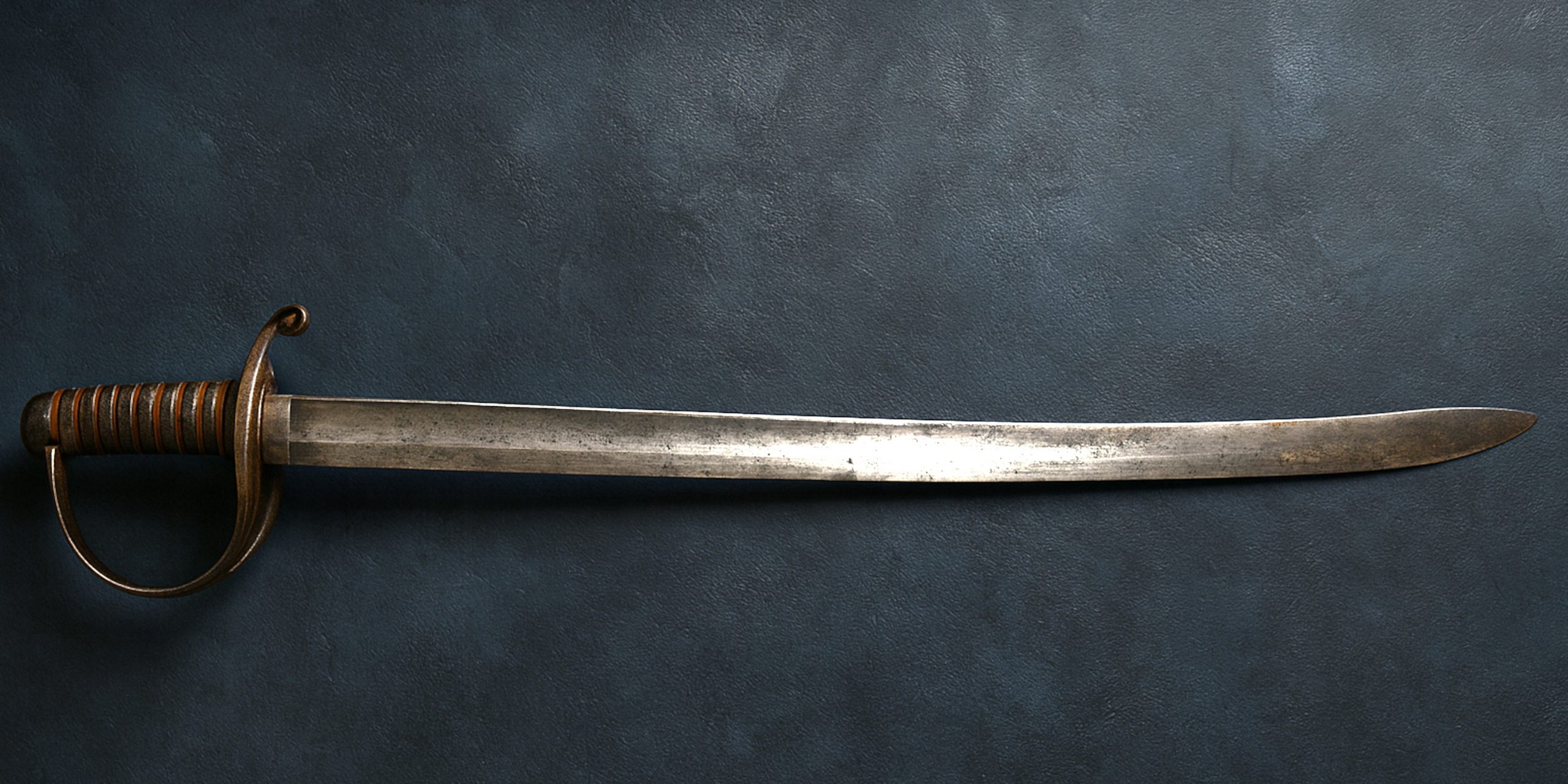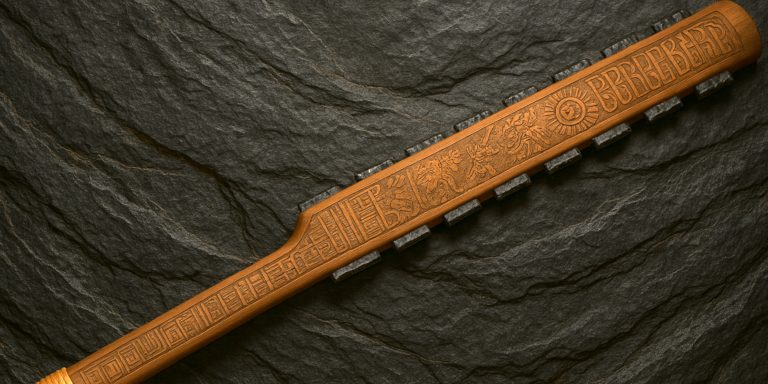
The Confederate Texas cavalry sabre was a quintessential weapon of the mounted Texan troopers during the American Civil War. Often produced under resource constraints, these sabres combined local craftsmanship with imported influences from pre-war American and European patterns. Though sometimes crudely made compared to Union models, they embodied the independence, ingenuity, and rugged fighting spirit of Confederate cavalrymen who rode under famous leaders such as Terry’s Texas Rangers and the 8th Texas Cavalry.
Used from 1861 to 1865, these sabres were typically forged in regional armouries or blacksmith workshops across Texas, Alabama, and Georgia. While not standardised, their defining characteristics included broad, curved blades, brass or iron hilts, and leather or wire-wrapped grips.
Specification
| Feature | Details |
|---|---|
| Overall Length | Approximately 99–102 cm (39–40 in) |
| Blade Length | 86–89 cm (34–35 in) |
| Blade Type | Curved single-edged with fuller, often hand-forged |
| Hilt | Brass or iron guard, three-branch or D-shaped |
| Grip | Wood core with leather or wire wrap |
| Scabbard | Iron or sheet-steel, sometimes tin-plated, with twin suspension rings |
| Weight | 900–1100 g (approx.) |
| Balance Point | Forward of guard for cutting strength |
| Maker Marks | Often unmarked or marked by local armouries (Leech & Rigdon, Louis Froelich, or unknown Texas smiths) |
History and Evolution
When the American Civil War broke out in 1861, the Confederacy faced a dire shortage of arms. Texas, being geographically isolated and lacking heavy industry, relied on local smiths and small-scale foundries to produce weapons.
Developmental Stages:
- Early War (1861–1862):
Texas cavalry units were equipped with imported or pre-war U.S. Model 1840 and 1860 sabres. Locally made sabres began appearing, loosely copying these Union designs but with simpler guards and less refined blades. - Mid-War (1863):
Confederate armouries such as Leech & Rigdon in Mississippi and Louis Froelich in North Carolina produced sabres distributed to Texas cavalry regiments. Local versions often had heavier blades and rougher finishes due to lack of steel and proper heat-treating facilities. - Late War (1864–1865):
By the final years of the war, sabres were often replaced by revolvers and shotguns for close combat. Many Texas cavalrymen continued to carry their sabres symbolically, reflecting the fading traditions of cavalry warfare.
Advantages and Disadvantages
Advantages
- Effective slashing weapon from horseback
- Forward-weighted design delivered powerful cuts
- Brass or iron hilts provided good hand protection
- Locally produced, ensuring supply independence
- Visually intimidating in cavalry charges
Disadvantages
- Inconsistent quality due to lack of industrial tooling
- Blades often poorly tempered and prone to bending
- Crude scabbards susceptible to rust
- Inferior steel compared to Union imports
- Heavier and less balanced than the U.S. Model 1860 sabre
Comparison with Similar Weapons
| Feature | Confederate Texas Sabre | U.S. Model 1860 Sabre | British 1821 Light Cavalry Sabre |
|---|---|---|---|
| Origin | Confederate States (Texas) | United States | United Kingdom |
| Blade Shape | Heavily curved, broader | Moderate curve | Deep curve, slender |
| Manufacture Quality | Variable, hand-forged | Industrial precision | High-quality steel |
| Weight | Heavier | Lighter | Balanced |
| Use | Cavalry combat, symbolic | Standard U.S. issue | Colonial and European service |
| Collector Value | High rarity | Common | Moderate |
Legacy
The Confederate Texas cavalry sabre represents the determination and improvisational skill of Southern craftsmen. Although rarely matching the refinement of Union or European blades, it symbolised the independence of the Texas soldier and the state’s fierce cavalry tradition.
After the war, many sabres were kept as heirlooms or melted down. Surviving examples are now prized by collectors and historians for their rarity and historical resonance. Museums in Texas, Virginia, and Georgia occasionally display authentic pieces with provenance to specific regiments.
Where to See
- Texas Civil War Museum (Fort Worth, Texas) – Displays Confederate cavalry weapons and local sabres.
- Museum of the Confederacy (Richmond, Virginia) – Features examples of Confederate swords and armoury artefacts.
- National Civil War Museum (Harrisburg, Pennsylvania) – Includes comparative exhibits of Confederate and Union cavalry arms.
- Heritage Auctions and Rock Island Auction Company Archives – Past listings of Confederate sabres with provenance to Texas units.
Collectors’ Guide and Auction Prices
Rarity and Value Factors
- Provenance to a specific Texas regiment
- Presence of original scabbard and grip wrap
- Armoury markings (e.g., Leech & Rigdon, Froelich)
- Blade integrity and minimal rust
- Documentation or photographic record
| Condition | Typical Auction Price (USD) | Notes |
|---|---|---|
| Excellent | $7,000–$12,000 | Complete, authentic with scabbard and provenance |
| Good | $3,000–$6,000 | Minor wear or replaced grip |
| Fair | $1,500–$2,500 | Heavily worn or missing parts |
| Reproduction/Replica | $300–$800 | For display only |
Notable examples of Confederate Texas sabres have appeared in auctions by Heritage Auctions and Rock Island Auction Company, where provenance to specific Texas regiments can double or triple the sale value.
The Seven Swords Takeaway
The Confederate Texas cavalry sabre stands as a rugged and evocative relic of the American Civil War. Though inconsistent in manufacture, it remains a testament to the resourcefulness of Texan soldiers and craftsmen under extreme scarcity. Its presence today in museums and private collections offers a tangible link to a defining era of mounted warfare, Southern identity, and American craftsmanship.



